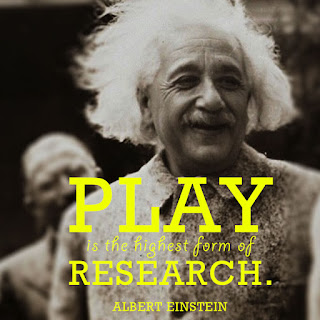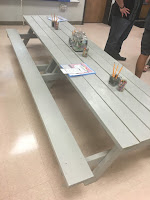This week's entry comes from Kristin Patrick, Librarian at Brooks School Road and co-host of the Two Kitties in the Window Podcast.
From Kristin:
Name
your guilty pleasures. Go!
Most
of us had zero problem naming something. Right? Mine happen to be Nachos
BellGrande from Taco Bell, Diet Coke, and HGTV’s Fixer Upper.
How
many of you listed reading? Even though many of us love to read, we struggle to
enjoy it without a sensation of guilt.
Sure, it’s pleasurable, but it takes valuable time! Thus, it becomes a guilty pleasure.
Time is of the Essence
The
dismissal bell rings at the end of the day, kids head out the doors, and we likely
reach for low hanging fruit when preparing for the next day: tidying up our
learning space, copying, collating, and chipping away at our inboxes. What we
promise ourselves will be a quick Internet search turns into hours of lost
time. These tasks keep us from picking up a book, a newspaper, magazine, or
eReader.
Guiltless Pleasure
Does
it need to be this way? Can reading be
pleasurable and help us be better educators?
Could there be a more powerful or productive means for us to prepare for
the next school day, the next school week, or the next school year, and could
it involve reading?
Arguments
for Reading:
- By
reading children’s and young adult novels, we can recommend books to students.
The Fifth Edition of Scholastic’s The Kids and Family Reading Report found that
“nearly three-quarters of both boys and girls (73%) say they would read more if
they could find more books they like.” Can our personal reading help meet our
professional goals? We can help students
find books they like if we know what’s out there!
Want more information? Follow this link:
Kids and Family Reading Report - By
reading picture books, we identify mentor texts for our writing instruction.
Writer Ralph Fletcher reminds us, “The writing in a classroom can only be as
good as the literature and the writing that supports and surrounds and buoys it
up.” How can we facilitate great student writing without sharing great
literature?

Great reading supports great writing. - By reading nonfiction, we model inquiry. We can’t expect our students to be interested in a variety of nonfiction topics if we aren’t interested in a variety of nonfiction topics. By reading newspapers and magazines, we collect relevant high-interest articles for use in our classrooms. Reading fills our professional toolbox.
- By reading online, we take note of the strategies our students need when navigating digital texts. We can share and teach what we learn from our own experiences.
- By reading professional journals and texts, we practice reflection. Professional reading often provides strategies and refinements that we can use immediately, even the next day.
- By reading fiction, we learn empathy. Our profession is about much, much more than content. Fiction expands our experiences and helps us understand all of our students.
The
benefits of reading are endless!
The Issue of Time; the Joy of Reading
Daniel
Pennac, who drafted The Rights of the Reader, writes, “The issue is not whether
or not I have the time to read (after all, no one will give me that time), but
whether I will allow myself the joy of being a reader.”
My
advice next weekend? Let the email go unchecked and the laundry go undone. Allow yourself the joy of being a reader.
Reading is part of our personal and professional preparation for good teaching
and learning.
As
educators, we need to move beyond thinking of reading as a guilty pleasure and
start thinking of it as an essential part of teaching and learning.
Kristin Patrick and Stephanie Dale are the Co-Hosts of Two Kitties in a Window, a podcast
dedicated to children’s books and the people who read and make them. Take a few minutes to listen to their latest
episode, an interview with author John David Anderson, award-winning author of
children’s fiction. (Two Kitties is now available through iTunes as well.)
| The link: Two Kitties in a Window |
Have
a great week, HSE. Keep learning. Keep growing.
Keep reading!
Your HSE Teaching and Learning Team
- Jan Combs, Assistant Superintendent of Teaching and Learning
- Stephanie Loane, Director of Elementary Education
- Tom Bell, Director of Special Education
- Jeff Harrison, Director of Educational Technology
- Phil Lederach, Director of Secondary Education


































